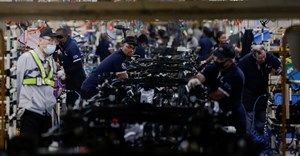4 hindrances to increasing mining's GDP contribution in 2021

Yushanta Rungasammy, director and co-head: corporate & commercial, and Rembuluwani Nembudani, CMS South Africa, have identified four specific issues that hinder the implementation of plans to reach tihis target.
- Government actions can make all the difference “The very specific goal to lift mining’s contribution to the country’s GDP to 10%, from 8% at present, is realistic, but does require some actions from the government to make it a reality,” says Rungasammy.
- Licencing processes Nembudani points out that this dovetails with concerns about the current inefficient system of licencing for both junior minors and well-established players. The licencing process requires a significant number of reports, guarantees and agreements between the government, communities, funders and mining operators. These documents are currently mostly required in paper form to ensure legitimacy. However, this can be overcome with a more electronic approach that will save much time.
- Power supply The unstable power supply seriously affects mining operations, which in turn impacts the industry’s ability to increase production. “Without electricity, deep mines in particular find it hard to maintain a safe working environment for staff, as air extraction systems and transport into and out of underground working areas, among other mining basics, are impossible without power. While temporary generators may be able to keep office staff working, they add to the costs of running the mine, and hence also affect the overall contribution a mine can make to the GDP,” Rungasammy says.
- Permission to be self sufficient The mining industry itself has the capacity to provide its own reliable power supply in many cases but is hampered by a fourth issue: the slow progress in granting mining companies the liberty and licence to generate their own power, Nembudani says.
The first issue is red tape, an ongoing issue for many businesses, but one that is particularly intense in the highly regulated mining industry.
“During the Mining Indaba, the Minerals Council CEO Roger Baxter shared that more than R20bn of potential investments in South African mining projects by members of the council was tied up in regulatory hurdles, a position that undermines the industry’s ability to increase its productivity,” she says.
While the vast majority of regulations make sense and are designed to keep mining activities safe and equitable for all, the sheer amount of paperwork involved hampers fast turnaround times in investigating the feasibility of mines, the initial investment period and the ongoing expansion of mines. Delays in assessing these submissions from mines by the various government departments is at the heart of the snarl-up. “A change to a more streamlined, advanced electronic system, away from the current mostly paper-based system, will assist mines to comply with regulations while getting to production much more quickly,” Rungasammy says.
The Covid-19 pandemic has served as a catalyst to move processes into a digital realm, which has contributed to the industry’s recovery despite the disruptions and uncertainties.
The Department of Mineral Resources and Energy’s intention to put in place a ‘one-stop-shop’ to halve the time it takes to process mining licences will assist in this goal, he says.
This concern is complicated by the fact that while some mines are located within the limits of metropolitan areas, the vast majority are located in hard-to-reach places, where power supply is tenuous as it is. An added concern is that, in certain cases, mines literally have the ore mined, but it is stuck underground, unable to be brought to the surface through lack of electricity. This, in turn, affects the willingness of funders to invest in such mines, further hampering the mines’ ability to deliver to their full potential.
At present it can take seven months to get a grid connection from Eskom or four months to get a licence from the National Electricity Regulator of South Africa (Nersa) to allow a mine to generate its own power.
“This is such a basic solution to a central problem that affects productivity in mining operations that it seems unthinkable to delay allowing mines to generate their own power by a third of a year at best, and more than half a year at worst,” he says.
“The mining industry is moving forward from a technology point of view, and this may provide additional impetus for the government to create a more streamlined environment that will improve the industry’s contribution to South Africa’s GDP," Rungasammy says.
















